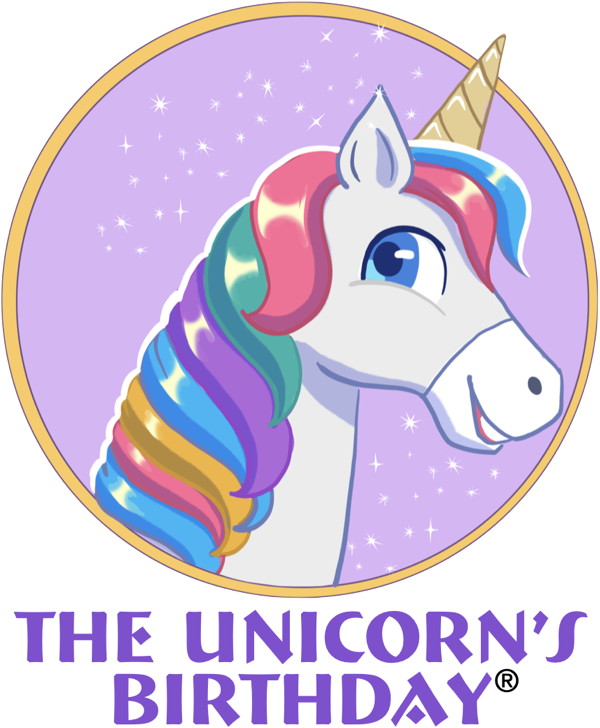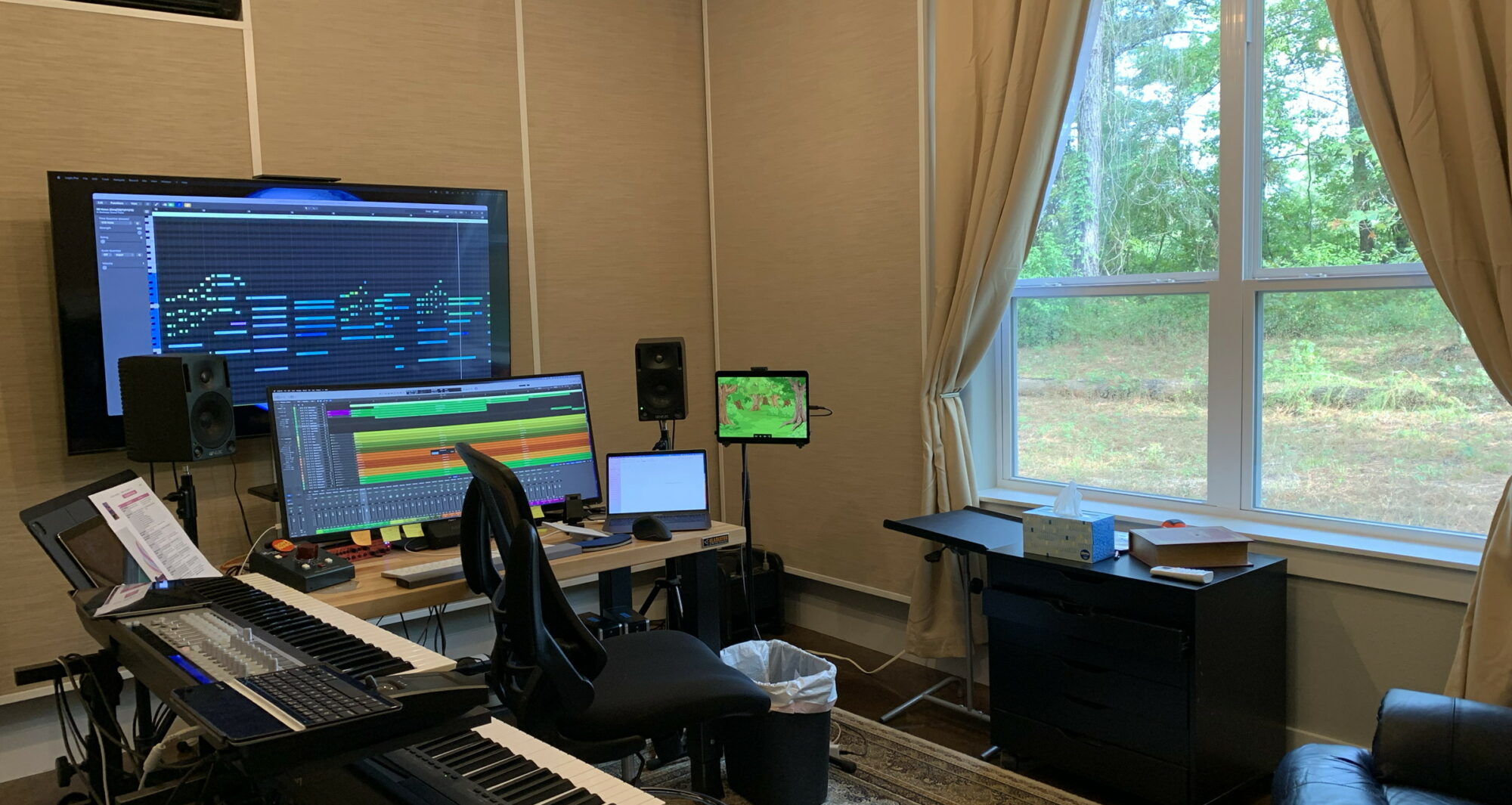
music & story by Bob Singleton
“The Unicorn’s Birthday®” is a gentle, fantasy-and-fun-filled symphony experience with engaging music, fun sounds, captivating on-stage activity, friendly graphics, and gentle audience interactivity. The audience will fall in love with the people, the sound, and the experience of the symphony orchestra.
General concert notes
the audience
This concert is designed from the ground up to be a musically-satisfying and welcoming concert for families with small children and special needs audiences. This audience can include parents with a preschool child, individuals with autism who are significantly impacted by various sounds and need noise-cancelling headphones, individuals with Down syndrome, or patients with dementia and their caretakers.
It is perfect for patrons that are OK with moderate audience activity during the performance and wish to enjoy a memorable orchestra experience without sudden, loud noises or musical tension.
The guiding principle is to connect to a difficult-to-reach audience, in mind, soul, and body. This is much different from concerts where the orchestra invites the audience to visit a world with them; whether it’s Berlioz’s drug-addled visions, or Ravel’s lush mythic soundscapes, Mozart’s courtly Vienna, or funky Detroit-beat Motown.
This audience gives the orchestra permission to visit THEIR world. The outside world is not very safe for them. The orchestra has to establish that they are friendly and are not going to “break the furniture” with shocking sounds or perceived threats.
That requires making everything as gentle and friendly as possible, so the audience can drop their guard and experience the music and the moment without fear.
The audience will be full of people who have never seen a live symphony orchestra. They have frightening questions like, “When do I clap?” “Who is that person with a stick, and what are they doing? Are they angry? Are they going to hit someone?” “Who is that mob of black-garbed people on the stage? Are they safe?” and, “What made that sound?”
This is an audience that fears they will get the rituals and ceremonies wrong, get laughed at, get “shushed,” or anger people because they clap, laugh, or make noise at the wrong moment.
the music
To accommodate this audience, I’ve chosen to forego the usual toolbox of musical dynamics. There are no harmonically or rhythmically tense “Jaws Theme” moments, no bombastic percussion or fortissimo blasting brass, no screeching piccolos or chair-rattling timpani.
I still have to create compelling music even without the usual musical dynamics. Composing is about creating tension, and then resolving that tension, but I can’t use the typical musical extremes of tension and resolution. I have to take the audience to expected places, with familiar melodic shapes, phrasing, and forms, to connect with the audience.
That means the dynamics are in the live staging, graphics, audience interaction, and fun sounds. Ducks quack, crows caw, cats meow, and the audience gets to use gross motor skills to flap imaginary wings, pose like a dancer, make sounds, and “conduct” the orchestra.
the orchestra
The orchestra is the star of this concert. There is narration, graphics, and a costumed character, but the orchestra performs for 2/3 of the time in the concert. When the orchestra plays, they are the focus of attention. People will leave talking much about the orchestra and little about the narration or costumed character.
The stand/sit instructions and action notes are not optional. They are critical to the performance. They cause the audience’s attention and connection to skyrocket. The orchestra becomes people, individuals with humor. They are both inspirational and aspirational.
The musicians must take the small personal risk to stand and play, have fun, and break the wall of the front row of musicians in the orchestra. The orchestra should be a collection of fun-loving individuals with personalities and a willingness to connect with the audience.
Trust me: There is no audience that will respond more warmly or appreciate you and your talent more.
Have fun. Embrace the activity. Love your audience. Extend joy. The audience will return the love and joy back to you.
Bob Singleton, composer
March 2023
===================
Concert summary
Premise: It’s a birthday party for the unicorn, and everyone’s invited!
A narrator invites everyone to a birthday party in an enchanted forest, where various groups of friendly, imaginary animals present dances for the guest of honor, the birthday unicorn. Where possible, graphics are projected during narration, or a coloring book/program is given away, and coloring pages are a pre-concert lobby activity.
The concert is a fable story and musical suite of 11 movements presented with alternating brief narratives and short, evocative musical movements, lasting a total of around 45 minutes. Most movements are presented as the accompaniment for various imaginary groups of friendly animals to perform dances they have prepared for the party. There are several opportunities throughout the concert for the audience to participate with simple motions imitating imaginary animals.
The “magical” unicorn remains invisible until the 11th and final movement when they appear onstage as a costumed character and ask the audience to help them “conduct” the orchestra.
It is suggested for sensory-sensitive audiences that hand-waving (“jazz hands”) substitutes for applause throughout the concert. The orchestra should wave back at the audience after each movement.
Larger instruments like bass clarinet and bassoons should bring neck straps for the times when they are standing and playing.
===================
Performance order and notes
pre-concert orchestra and conductor entry, tuning:
The typical symphony concert opening ceremonies should be completely dispensed with. All musicians, including the concertmaster and conductor, should informally enter the stage in a leisurely manner. The conductor can be anywhere they choose to be on stage, blending in with the musicians. Musicians can warm up and freely chat with each other if they choose. Tuning should be done discreetly and informally. When all is ready, the conductor should step onto the podium and deliver the welcome, without expecting the audience to quiet down to silence.
01 “The Birthday Fanfare” (an overture)
This movement welcomes the audience gently and musically to the concert by starting out quietly and building moderately. It allows the audience to get used to the presence and volume of the symphony. The audience is introduced to musicians standing and sitting, breaking the front wall of players, and allowing the audience clearly see what instruments are making the sounds.
The narrator enters the stage after this movement and introduces each movement with a brief description of the imaginary characters and their actions.
02 Party in the Woods
A pleasant mid-tempo musical exposition of how a unicorn’s birthday might sound. A shortened version of this movement is reprised as the final movement.
03 The Ponies Promenade
A dignified march, with percussion making clip-clopping hooves sounds. The audience is invited to mimic prancing horses.
04 The Jumping Joker Monkeys
This is the most energized movement of the entire concert. This sounds like circus music.
05 The Crows Choir
Everyone gets to channel their inner crow and say, “Caw!” The humor comes from the juxtaposition of the dreamy, melodic score with the loud, raucous “caws” coming from the orchestra. It’s important to stand and deliver your “caw” with personality. It doesn’t have to be absolute metric precision delivery on your caws, but feel free to vary the character. Do high, do low, do questioning – have fun.
Again, standing is critical. For some audience members, if they can’t see where the sounds come from, they are frightened. For others, it’s a chance to see what the rest of the orchestra looks like.
Have fun! It’s contagious!
06 Parade of the Penguins
This is a fun, gentle march movement that musically describes a scene with precision-marching penguins. The audience is encouraged to simply mimic marching penguins. Marching penguins – what could be cuter than that? Have some cute fun with this.
07 The Plucky Porcupines
This presents more fun with marches and vocalizations in this movement. The orchestra gets to say “ouch” in singles and groups throughout, indicating that they have been poked by a porcupine. The “ouch” sounds should be loud enough to be easily heard over the orchestra for the comic effect, but should never be overly painful-sounding. Make it sound like you’re being pushed, but not stabbed.
The ouches are very metrical in this movement. Be sure to perform them when and where indicated, adding lots of fun personality.
08 The Kittens Chorus
This is a movement with “mewing” kittens. The “mew” sounds will come from the 2 Bb clarinets. They must remove their mouthpieces, blow in them to make a gentle squeak, and move their index finger in and out to get a high-pitched “mew” like sound. The mews should only be downward, squeaking the mouthpiece while withdrawing the index finger.
The clarinet players remain standing throughout the movement and have action instructions to mimic kittens by preening and waving their paws slowly at each other in a lazy fashion.
The humor comes from the juxtaposition of thick, romantic melodies and harmonies with small, vulnerable, untuned “mews.” Audiences love this movement.
09 The Bears Ballet
This is a bass clarinet feature. The bass clarinet should use a neck strap to stand for this movement. The premise of the action in this movement is that bears can’t really dance. They can only slowly walk into place, and briefly hold a ballet pose or position. The “pose” moments are cued with the bell tree while the orchestra holds a chord.
If the conductor and members of the orchestra are so moved and are not otherwise engaged, they can stand and strike a pose during those moments as an encouragement to the audience to participate.
10 Waltz of the Ducks
There are noisy ducks in the orchestra! The English Horn and both bassoons plus a percussionist with a duck call will quack/honk like ducks and geese in several places, with the double reeds using multiphonics. The orchestra’s job is to play the waltz as a serious concert waltz so that the crazy honking stands in stark contrast.
11 The Birthday Finale
This is the big pay-off. It is a shortened reprise of the 2nd movement, “Party in the Woods.” The costumed character unicorn will come on stage and will “conduct” the orchestra along with the audience. The conductor will remain on the podium to conduct and hold everything together.
This should be bright and lively but should maintain the narrowed dynamics of the rest of the concert.
Bows & exit
Bows should be as abbreviated as possible. Move quickly to meet & greet in the lobby with all available personnel, including musicians, conductor, narrator, and unicorn costumed character.
********end********
